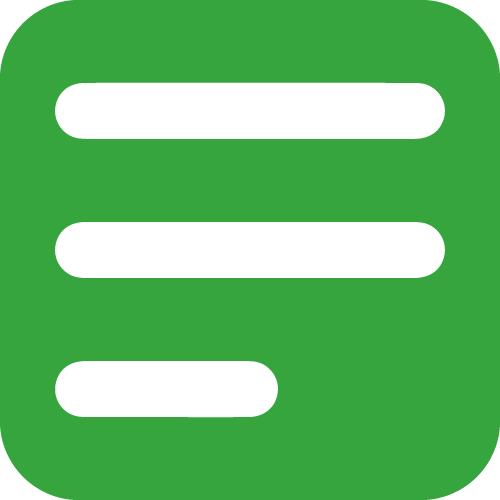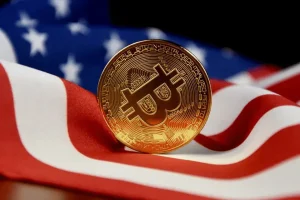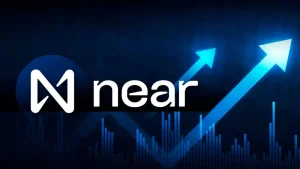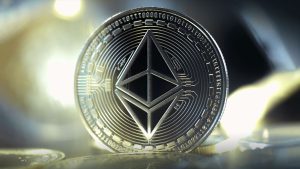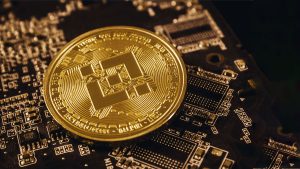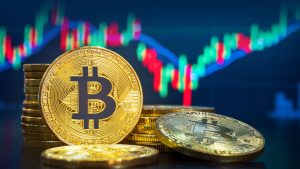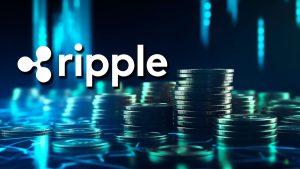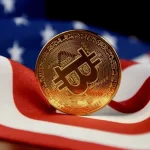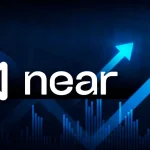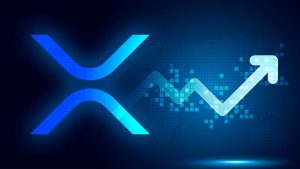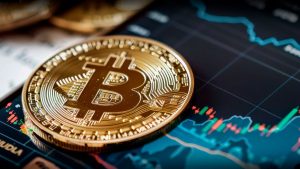Introduction
Binance is the biggest crypto exchange in the world in terms of trade volume. The platform offers a product suite that inexperienced and experienced crypto traders can explore. Binance says its mission is to provide the core infrastructure services for organizing crypto trading globally.
The exchange envisions a future where everyone can earn, hold, spend, share, and give money regardless of their personalities and locations. Binance’s Core Values serve as a framework that guides its actions, decisions, and behavior, supporting cohesive teamwork across international teams.
Through its desktop or mobile dashboards, Binance offers various trading features, including market charts for hundreds of cryptocurrencies. It is a preferred exchange for trading Bitcoin, altcoins, stablecoins, and other digital assets.
Users can also access various trading options, including futures and several order types. However, many of its options and features are region-specific.
History
Changpeng Zhao, popularly known as CZ, is the mastermind behind Binance. With an impressive track record of successful startups, CZ launched Binance in July 2017.
CZ’s company, Beijie Technology, established the exchange following a successful ICO that raised $15 million. Investors who participated in Binance’s ICO received Binance Coin (BNB), which could be used to trade cryptocurrencies and pay fees on the exchange.
Binance became the world’s biggest digital asset exchange by trading volume just 180 days after launching. Initially established in China, Binance relocated its headquarters to the Cayman Islands when the Chinese government increased regulatory scrutiny of crypto businesses.
Chanpeng Zhao built the Binance ecosystem, which comprises Binance Exchange, Binance Labs, Launchpad, Academy, Research, Trust Wallet, Charity, NFT, and more. Binance is encountering legal challenges in several nations, such as Nigeria and Canada.
Additionally, Zhao resigned as CEO of Binance following an investigation by the US Department of Justice (DOJ). He has now completed his four-month jail sentence, which he bagged after pleading guilty to money laundering charges.
Richard Teng, previously CEO of Binance Singapore, is now the CEO of Binance.
Trading Experience
Binance provides an excellent desktop platform and standalone application with a variety of features for a smooth trading experience.
Unlike other exchanges, the desktop application is distraction-free upon launching. The user-friendly interface makes it simple to create and manage trading positions.
Traders can also utilize the Binance platform to monitor their portfolios, trade history, order book, and price charts. Furthermore, Binance offers several order types, including stop orders, limit orders, stop-limit orders, stop-market orders, and trailing stop orders.
Users can also choose different trading views, from classic to margin and OTC views. However, many of these features include margin trading, and some order types are unavailable in the United States.
Available Cryptocurrencies on Binance
Binance supports over 400 cryptocurrencies and over 110 fiat currencies via P2P trading. Some of the cryptocurrencies available for trade on the exchange include Bitcoin (BTC), Ethereum (ETH), Binance Coin (BNB), Shiba Inu (SHIB), Solana (SOL), and XRP. Binance is highly accessible to users globally, serving traders from over 100 countries and regions.
Achievements
Binance has achieved a total average daily volume of $65 billion. Binance recorded a key milestone in 2022, with spot transactions reaching 300 billion.
Binance Products and Services
Users can perform so many services on Binance ranging from spot, margin, and futures market trading. Other products offered on the platform include P2P, Earn, Launchpad, and NFT trading via a dedicated marketplace.
Peer-to-Peer (P2P) trading
This is a type of trade in which a buyer and seller directly exchange crypto and fiat assets via an online marketplace and escrow services. On Binance, interested users must add a valid mobile number and complete Identification Verification before they can trade on its P2P platform.
Binance P2P allows users to trade their cryptocurrency with other users through broadcasted deals, referred to as advertisements. A user who posts advertisements on Binance P2P to buy/sell crypto is a maker. A user who buys/sells crypto via listed advertisements on Binance P2P is a taker.
Binance Launchpad and Launchpool
These platforms help in advising project teams on how to best issue and launch their token. Here, projects can get a full-service offering from advisory services before the token is even issued, to post-listing and marketing support.
These two platforms aim to drive support and awareness for promising blockchain startups while helping investors maximize returns. Similar to a crowdfunding platform, users can lock cryptocurrencies and receive airdrops of the new token in return.
Top cryptocurrencies supported on Binance Launchpad in the past include Artificial Superintelligence Alliance (FET), Polygon Ecosystem Token (POL), and Injective (INJ).
Binance NFT Marketplace
Users can create (mint), sell, purchase, bid on, collect, trade, showcase, and otherwise transact digital blockchain collectibles via the Binance NFT Marketplace.
Binance assists in facilitating transactions between a buyer and seller of an NFT. The exchange collects revenue on the Binance NFT Marketplace via transactions and other applicable fees.
Some Non-Fungible Tokens (NFTs) traded on the platform include Fluffy Metaverse, Opepen Edition, DeGods, Lil Pudgys, and Azuki.
Binance Earn
Users can transform the potential of their investment portfolios with Binance Simple Earn. By making deposits for either flexible or locked periods, they can reap the rewards on more than 300 types of digital assets.
Users can subscribe and redeem Flexible Products at any time. However, Locked products have fixed durations but typically offer higher APRs than Flexible Products.
Traders from eligible countries who subscribe to BNB Simple Earn products will automatically participate in Launchpool and Megadrop.
Binance Exchange Security
Binance places user protection as a top priority. The exchange embedded state-of-the-art security measures and strict data privacy controls to ensure users’ information and funds are safe.
The platform security includes secure storage, real-time monitoring, organizational security, and advanced data encryption. Also, the exchange employs user-level security including safe sign-in, access control, and security notifications.
Other security features include two-factor authentication (2FA) via the Google Authenticator app or Short Message Service (SMS), device management, address whitelisting, and device access restrictions.
Furthermore, Binance conducts Proof of Reserve audits monthly, ensuring all customer assets are maintained with at least a 1:1 reserve ratio.
Reliability
Binance has never been hacked or suffered a loss of customer funds. However, Binance’s dedicated blockchain network, BNB Smart Chain, was exploited in 2022.
Binance was quick to resolve the issue with full transparency, ensuring no users lost funds as a result of the exploit.
Regulatory Requirements
Binance requires customers to complete a mandatory Know Your Customer (KYC) form to comply with legal and regulatory standards. The exchange upholds rules governing Anti-Money Laundering (AML), counter-terrorism financing, and sanctions from other agencies.
Binance currently holds regulatory licenses, registrations, authorizations, and approvals in various jurisdictions, including several countries in Europe, the Middle East, Asia Pacific, the Americas, Africa, and the Commonwealth of Independent States.
Binance Exchange Fees
Binance’s fees rank among the lowest in the industry. While US-based users will pay slightly more on Binance.US, the fees are still cheaper than those on other major platforms. Binance has a maker/taker fee system, with costs varying according to trade volume and Binance Coin (BNB) balance. Generally, higher-volume trades incur lesser fees.
Users holding BNB can receive up to 25% off on trading fees when paid using the coin. Note that the 25% discount applies to spot and margin trading fees. A 10% discount applies to derivative trading fees and a 5% discount on interest payments when margin trading.
To activate this discount, users must hold BNB in their account and choose to pay fees with the coin. VIP users can also take advantage of these discounts in addition to their already existing perks.
Supported Countries and Regional Restructions
Binance caters to 200 million registered users in over 180 countries. Supported countries and regions where the Binance App is supported include Australia, Argentina, Angola, Yemen, Vietnam, and others.
Meanwhile, Binance has stopped new registrations and restricted futures and derivatives trading for new UK users to comply with FCA laws. Likewise, users in Germany, Italy, and the Netherlands are prohibited from trading futures or derivatives.
Furthermore, residents of the United States cannot use the web version of Binance. A dedicated platform called Binance US is specifically designed for US residents.
User Incentives
Besides Binance Earn, users can earn rewards through the Binance affiliate program, referrals, and monthly missions.
The Binance Affiliate Program
This allows you to create unique referral links that invite your community to register and trade on Binance. If anyone clicks the link and registers, they’ll be automatically attributed as your referral. Users receive a commission on every trade they make on Binance Spot, Futures, Margin, or Binance Pool.
Referral Program
Platform users can also share their Referral ID/link with a friend who does not have a Binance account to get bonuses. Referees must deposit a total of more than $50 within 14 days of enrollment. Both the referrer and referee will each receive a $100 cashback voucher.
Binance also has a rewards hub that features weekly Wordle-style challenges, where users solve crypto-related word games to earn Binance points. Users can unlock the points to access trading fee rebates.
The trading platform also organizes monthly missions with incentives that include a share of 1 million Binance points and special gifts.
Customer Service on Binance Exchange
Binance has a dedicated customer service team where users can share their questions and complaints. They are staffed 24 hours a day, 7 days a week, and strive to address concerns as quickly as possible. The Binance website also has a chat box in the lower right corner of the help screen.
Customers can also contact Binance via various social media accounts, including Facebook, TikTok, X (formerly Twitter), Instagram, and Reddit.
How to Open An Account With Binance Exchange
- Launch the website either on a desktop tab or mobile
- Click on Sign-in at the top bar
- Enter either your phone number or email, and enter the verification sent
- Enable 2FA
- Link your payment method
- Deposit funds and commence trading
How to Buy Crypto on Binance Exchange With Credit/Debit Card
Binance offers several ways to buy cryptocurrencies on the platform. You can use a credit/debit card, cash balance, or Apple Pay/Google Pay to purchase crypto on Binance. However, before getting started, please ensure you’ve completed Identity Verification for your Binance account.
- Start by selecting ‘Credit/Debit Card’ from the home screen
- Select the crypto you want to buy. You can scroll through the list or type on the search bar
- Fill out the amount you wish to purchase
- Choose ‘Pay with Card’ and press on ‘Confirm’. You will be requested to add a new card first if you have not linked a card previously
- Make sure the amount you want to spend is correct, then click ‘Confirm’ at the bottom of the screen
- The purchased cryptocurrency will be deposited to your Binance Spot Wallet once the transaction is completed
Deposit and Withdrawal Options on Binance Exchange
Binance supports SEPA transfers, ZEN, and P2P Express, offering near-instant deposits. Additionally, users can exchange crypto and fiat using several payment methods not directly supported by Binance like CashApp, Zelle, and Western Union.
Binance distinguishes itself from its rivals by allowing users to deposit fiat currency directly using a credit or debit card. There are various transfer methods and currencies used for withdrawals on Binance. While ZEN withdrawals are free, SEPA withdrawal fees are the same as for deposits.
The minimum withdrawal amount for most methods is around 5 EUR or equivalent. This amount, however, varies for P2P trading as providers set their minimums.
Daily withdrawal limits on Binance depend on whether a user withdraws cryptocurrency or fiat currency. Limits placed on fiat currency depend on your level of KYC verification, while crypto withdrawal limits depend on your VIP level.
You can apply for higher limits by submitting additional documents regarding sources of income and wealth.
Disclaimer: The information provided in this article is for informational purposes only. It does not constitute investment, financial, trading, or any other sort of advice. You should not treat any of BGECrypto’s content as such. BGEcrypto does not recommend that any cryptocurrency should be bought, sold, or held by you. Do your due diligence and consult your financial advisor before making decision.

